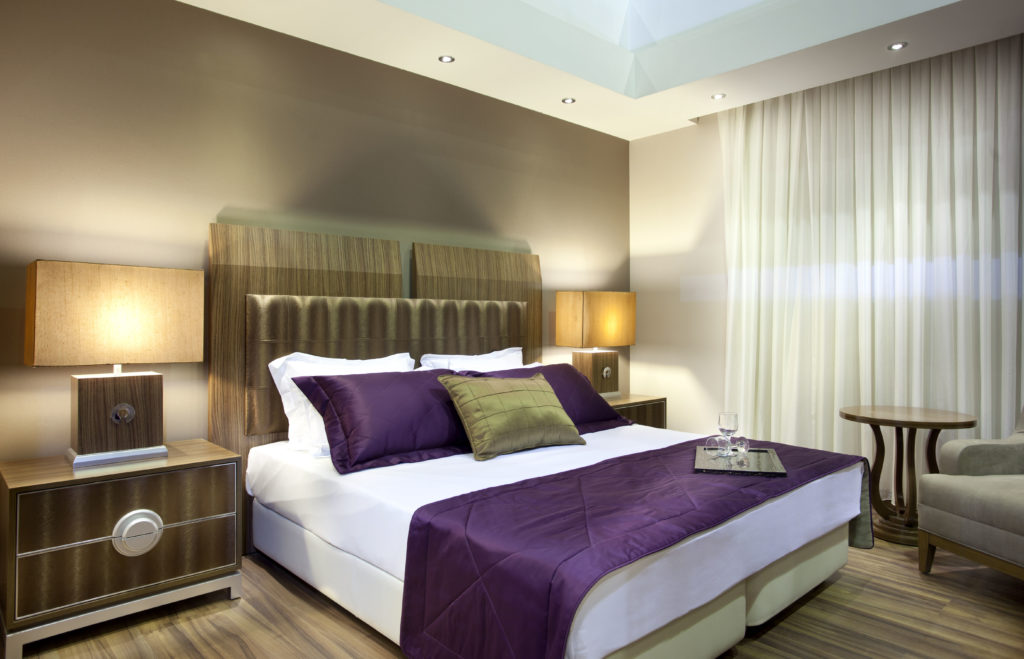Aesthetics… price… livability… there are many competing priorities when building a new home, and unfortunately, building a quiet home isn’t atop very many people’s lists. Yet, with many of the most effective solutions for reducing noise best undertaken during your home’s construction, consideration now can help avoid regrets later.
Essentially, noise either comes from outside of your home or within. There may be little you can do to minimize traffic or neighborhood noises such as lawn mowers, barking dogs, and children playing, but better windows and doors, air sealing, and insulation all contribute to reducing external noise entering your home. Double- and triple-pane windows block noise better than single-pane. Reduce air (and, therefore, sound) infiltration through extensive use of caulking, or opt for expanding spray foam insulation to seal joints and penetrations in and around exterior walls. Once the home has been well-sealed, you can specify sound-deadening insulation between the studs for a much more serene home. Alternatively, homes built with concrete exterior walls, and especially insulated concrete form (ICF) walls are inherently more peaceful regarding external noise than typical wood construction.
Equally important is reducing unwanted noise created within the home. We will deal with home design issues and choosing quieter products for the home in upcoming posts. For now, we will consider approaches for blocking unwanted sound, and for absorbing those irritating noises best addressed when building.
Whether it’s toilets flushing, the washing machine, media entertainment, or loud discussions, unwanted noise from adjacent rooms in your home spreads freely until those sound waves run into something. Think about the difference just closing your home office door makes. But did you know a solid core door will block approximately twice as much sound as its hollow core counterpart? Solid core doors are more expensive, so you may want to carefully choose where to opt for these. Additionally, weather-stripping around the door and adding a sweep at the bottom of the door to fill the gap between the door and the flooring will make noticeable differences.
The drywall on your son’s bedroom wall and the drywall on your bedroom’s side of that wall muffle noise significantly but that may not be quiet enough. Fortunately, several fixes are available. A double layer of drywall is one of the more common approaches. Rather than standard drywall, noise-deadening drywall such as Quiet Rock® and SoundBreak® XP® can be used. Between the studs and drywall, SOUNDSTOP®, a ½” soundproofing fiberboard tacked to the wall and/or ceiling framing studs and then covered by the drywall, is highly effective.
Photo courtesy: Ask for Purple
Acoustiblok®, an 1/8″-thick, flexible sound proofing mat, which transforms and dissipates sound and vibration into inaudible friction energy, according to the manufacturer. Insulating standard interior walls with a sound-deadening insulation is another option. Along with any of these approaches, seal wall penetrations and drywall seams with an acoustic caulk such as QuietZone® Acoustic Sealant.
Sometimes the sound is coming between floors. Home theatres are popular in basements, which naturally tend to be darker environments. In a two-story home, it may be hard for your kids to get to sleep upstairs while the party’s still going on in your great room. And if there is living space over your garage, the sound of the garage door opener operating can be disruptive.
Some of the solutions used for reducing sound coming through walls, such as insulating the cavities, sound deadening drywall, or SOUNDSTOP and Acoustiblok sound barriers, can be used for diminishing sound travel between floors. And, as with walls, acoustic caulking around penetrations and cracks will help. Additionally, sound-dampening glue can be used under floors. Flooring material is also one of the more obvious areas where sound absorbing options come into play. Within a room, sound waves bounce off hard surfaces such as tile and hardwood, while carpeting and luxury vinyl products are much quieter. An acoustical underlayment can be added for an extra measure of quiet. Similarly, acoustical underlayment, carpeting plus pad, or luxury vinyl products, help absorb sound transmission between floors. If you do opt for hard surface flooring, heavy area rugs may help reduce sound.
Having the opportunity to consider spending a little more to achieve serenity is just one of the many benefits of buying a new home rather than a resale house. As we learned during the COVID-19 outbreak, peace and quiet in our homes is truly a blessing. Talk with your builder about the various soundproofing measures they recommend. You’ll be glad you did!
Next time – Achieving a quieter home through design!
Last week’s post: Quiet Homes – Your Health Depends on It!
For more resources on thoughtful design and products:
- View other articles on our blog
- Browse our Her Home™ Magazine
- Thoughtful Design Concepts
Cover photo: <a href=’https://www.freepik.com/photos/book’>Book photo created by Racool_studio – www.freepik.com</a>

